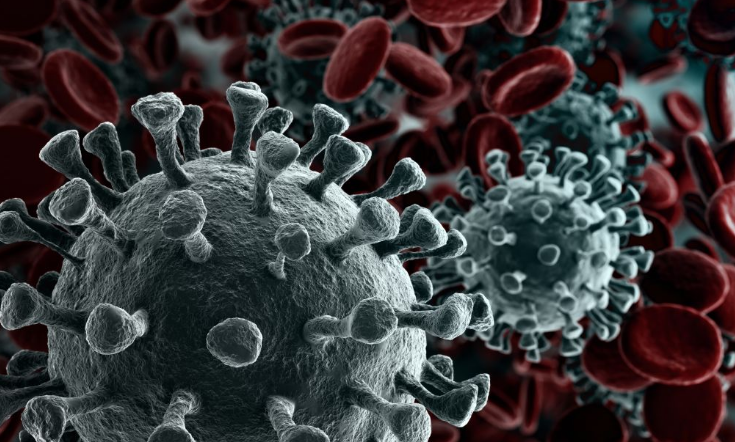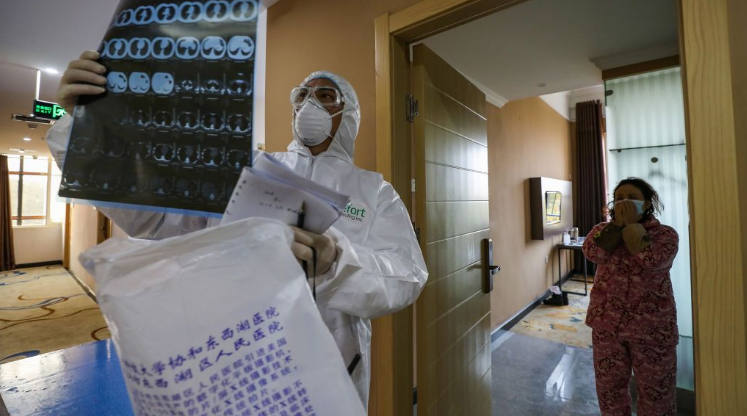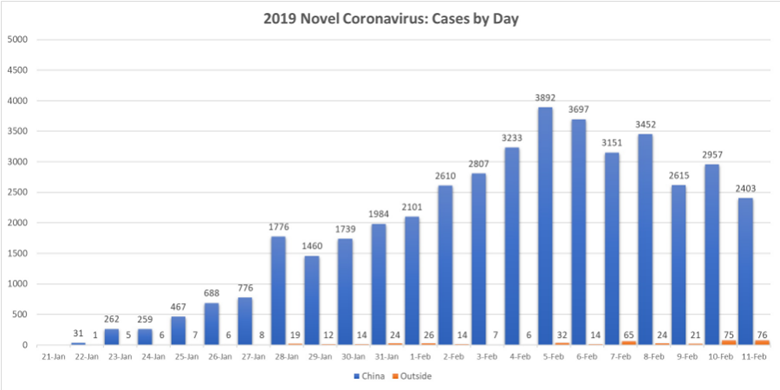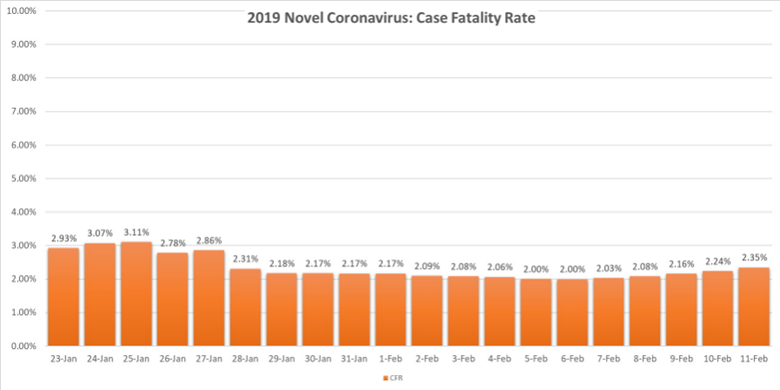What is the Coronavirus? A Deeper Scientific Analysis of COVID-19

This analysis reflects the best publicly available data about COVID-19, effective February of 2020. There is a great deal of confusion regarding coronavirus transmission, coronavirus symptoms, coronavirus treatment, the origin of the disease and the timeframe for developing a coronavirus vaccine. This is both a developing news story, and an epidemic that is commanding the attention and resources of large numbers of the medical and scientific community. As such, breakthroughs and new understandings are to be expected. In this white paper, we will attempt to answer the following questions with the most up-to-date information available:
- What is the coronavirus?
- What are the most common coronavirus symptoms?
- Is there a coronavirus vaccine?
- Is there any type of coronavirus treatment? How can you prevent it?
- Where did COVID-19 come from?
- How widespread is COVID-19?
- How dangerous is COVID-19?
- What are the primary avenues of coronavirus transmission?
- Can I get COVID-19 from my pet or other animals?
- What is the gestation period for 2019n-CoV?
- Can 2019n-CoV be transmitted asymptomatically?
What is the coronavirus?
These viruses are actually a fairly common family of viruses, so named because of the spikes on their surface, which vaguely resembles the sun’s corona. According to the National Institute of Health, coronavirus infections can range from common colds, to dangerous epidemics, such as the SARS and MERS outbreaks. The virus which is capturing so much international attention at this time is a mutated strain known as the 2019-nCov virus. That delineates the year, and “novel” coronavirus, because this appears to be a newly evolved strain. So exactly what is the coronavirus? A new strain of a fairly common virus that has spread rapidly, and for which the world lacks vaccines or antimicrobial treatments. The World Health Organization has announced that the official name of the disease is COVID-19. The World Health Organization officially declared the coronavirus a “public health emergency of international concern” on January 30, 2020.
What are the most common coronavirus symptoms?
Coronavirus symptoms often resemble a common cold, though they can progress to a potentially fatal, pneumonia-like illness. Coronavirus symptoms can include any of the following:
- Fever
- Sore throat
- Severe cough
- Shortness of breath/difficulty breathing
- Body aches
- Gastro-intestinal issues/diarrhea
And in extreme cases coronavirus symptoms may involve:
- Lung lesions
- Pneumonia
- Organ failure
Anyone exhibiting these symptoms, especially if they have either been to China or been exposed to anyone who has the COVID-19/been to China is encouraged to seek coronavirus treatment from a medical professional. People with pre-existing medical conditions, such as asthma, diabetes, heart disease, and kidney failure are more vulnerable to COVID-19 becoming a severe or life-threatening illness. They should seek coronavirus treatment immediately.

Figure 2. Researchers trying to develop a coronavirus vaccine
Is there a coronavirus vaccine?
There is no coronavirus vaccine at this time. Researchers around the globe are racing to develop a coronavirus vaccine. It is unknown when such a coronavirus vaccine may be perfected or available to the public. Vaccines against pneumonia are not effective as a coronavirus vaccine, and oral antibiotics are inconsequential according to the World Health Organization. Please note that is took researchers about 20 months to develop a SARS vaccine, and about 6 months to develop a Zika vaccine.

Figure 3. Coronavirus treatment being pioneered in China
Is there any type of coronavirus treatment? How can you prevent it?
While there is no coronavirus vaccine, the CDC and FDA have approved a diagnostic test to detect COVID-19. Researchers are also already testing the efficacy of existing antimicrobial drugs to fight COVID-19. It is unknown when or if these tests will yield conclusive results and serve as viable coronavirus treatments. Since COVID-19 is, in many ways, similar to a cold, coronavirus treatment is often similar to the treatment of a cold –with the heightened concern of spreading the disease. If you suspect you may have been exposed to COVID-19, we strongly urge you to consult a physician immediately to receive coronavirus treatment. Physicians recommend getting plenty of fluids, rest, and a healthy diet. Coronavirus symptoms can typically be treated with over the counter cold medicine, according to the World Health Organization. Special care should be taken regarding 1- pneumonia, 2- hydration and organ function, and 3- avoiding the transmission COVID-19.
The best defense against COVID-19 is to avoid catching it in the first place. To that end, the Center for Disease Control recommends the following steps of prevention:
- Avoid contact with anyone known to have COVID-19
- Avoid traveling to areas effected by the outbreak, particularly Central China
- Wash hands often and vigorously with soap and water for at least 20 seconds
- Avoid touching your face, nose, mouth or eyes unless your hands are freshly washed
- Clean and disinfect any surfaces that you frequently touch with antimicrobial cleaners
- Cover your mouth and nose with a tissue when coughing and sneezing. Dispose of the tissue and vigorously wash your hands
- Stay home when sick and treat any illnesses that might stress your immune system
- Those with compromised immune systems may consider wearing a medically approve mask when in public settings. The World Health Organization has specifically warned that wearing a mask is not guaranteed to stop the spread of the 2019nCoV virus
- The CDC also has a complete list of recommendations for people who are infected or suspect they may be infected with the 2019nCoV virus
- Be alert for coronavirus symptoms and if detected, seek immediate coronavirus treatment
Where did COVID-19 come from?
The COVID-19 outbreak began in the city of Huanan in the Hubei province of Central China. Because there is a government-run biomedical research lab in the area, a number of unsubstantiated conspiracy theories have tied 2019nCoV to the laboratory. The data does not support these claims. Rather, scientists are reasonably certain that 2019-nCoV is a mutated strain of bat virus. A virus known as RaTG13, which is found in bats in Asia matches 96.2% of their genetic sequence with 2019-nCoV. Researchers have traced the outbreak to a Huanan seafood market. Of the 585 samples tested, 33 were positive for 2019-nCoV and all were in the huge market’s western portion, which is where wildlife was sold. No bats were sold there. Scientists believe an as-yet-to-be-identified animal acted as a stepping-stone for coronavirus transmission to move from bats to human beings. According to Science Magazine, “The SARS coronavirus has a similarly close relationship to bat viruses, and sequence data make a powerful case that it jumped into people from a coronavirus in civets that differed from human SARS viruses by as few as 10 nucleotides. That’s one reason why many scientists suspect there’s an ‘intermediary’ host species—or several—between bats and 2019-nCoV.” It is believed that 2019-nCoV shared a common ancestor with RaTG13 as recently as 25-65 years ago.
How widespread is COVID-19?
As of Feb. 11, 2020, there have been 45,211 confirmed, diagnosed cases in 28 nations, including the US. The vast majority of patients, more than 44,600 confirmed cases, are in China. According to the World Health Organization, there are 1118 confirmed deaths related to the COVID-19, 4871 recovered/discharge patients, and 39,222 active cases of infected patients under the care of a physician. Click here for the most up-to-date numbers. It is very likely these numbers are somewhat under-reported. Especially during the early stages of the outbreak, many local Chinese citizens and officials accused the Chinese government of under-reporting the number of cases, which may be a relatively minor factor. That does not need to be a factor in order for there to be a problem with under-reporting, however. Because mild cases of COVID-19 present very much like a cold, it is highly likely that some individuals were either misdiagnosed, or did not even choose to receive coronavirus treatment simply because they were unaware they carried the virus. This is especially true in the early stages of the epidemic, when public awareness was lower.
How dangerous is COVID-19?
The two most common ways of measuring the danger an epidemic poses are the transmission rate and the case fatality rate. Each of these numbers measures different but important metrics.

Figure 4. Coronavirus transmission and contagion – new cases by day
The transmission rate (R0) measures the basic reproduction number of the virus – the number of new cases of infection created, on average, from each existing case. If the R0) value for an epidemic is less than 1, the epidemic is thought to be contained, and should eventually die out. If an outbreak has an R0 value of 2, the epidemic would be doubling in size. Since it takes roughly 14 days to recover from the 2019n-CoV virus, an R0 value of 2 would mean the number of cases would double every couple weeks. Professor Joseph Wu has published the most authoritative paper on the spread of 2019-nCoV, and he estimate the number of cases is doubling every 6.4 days. As this chart from DailyKos shows, the epidemic is spreading significantly faster than that. The chart also indicates that the R0 value is dynamic, and not a constant. Prevention efforts appear to be curtailing the pace at which patients are contracting COVID-19. This is good news. To give these numbers some context, the R0 for MERS was estimated to be between 3.9 and 5.0 until it was contained. In a sad twist, the lethality and speediness of MERS actually helped contain the disease. COVID-19 is already significantly more widespread than MERS. It appears likely that, at its peak, the coronavirus transmission rates will exceed those of MERS.

Figure 5. CFR by day – worst of the coronavirus symptoms and impacts
The case fatality rate is a measure of the ratio of patient deaths to the total number of diagnosed cases. The case fatality rate of 2019n-CoV appears to be between 2% and 3%, as this graph from DailyKos shows. Those numbers, however, may accidentally be misleading. If any epidemic were to take, on average, 30 days to achieve lethality, then any patient to contract the disease in the last 15 days would be statistically less likely to have died from it. They are still counted in the total number of diagnosed cases, but the majority of the deaths from those cases have not yet been reported. Once the total number of new cases per day remains relatively constant, the averages tend to settle in, but when there are large spikes in the number of cases, it can skew the ratio. In the case of the 2019n-CoV virus, such a spike has happened, and the majority of all cases have been diagnosed within the last 8 days. Lethality is occurring between a couple days and a couple weeks, with no agreed upon average. As such, it seems very unlikely that the case fatality rate would dip below 2%, though it may rise slightly over time. Unfortunately, some of the large number of people to get sick in the last 8 days are likely to perish, and that will drive up the case fatality rate.
To give these numbers some context, the case fatality rate for MERS was over 30%, and resulted in 858 deaths worldwide. The case fatality rate for influenza is approximately 0.1% depending on the year. Because the flu is so much more common, however, it actually kills about 10,000 people per year in the US alone. So, the coronavirus transmission rate is a very important consideration when discussing the dangers posed by the outbreak. For more on 2019n-CoV replication, consult the National Institute of Health.
What are the primary avenues of coronavirus transmission?
According to the World Health Organization, ”The new 2019-nCoV is a respiratory virus which spreads primarily through contact with an infected person through respiratory droplets generated when a person, for example, coughs or sneezes, or through droplets of saliva or discharge from the nose.” Much like other cold and flu microbes, direct contact with discharge or infected surfaces can spread 2019n-CoV. Caution should be exercised regarding shared cups and silverware, commonly touched surfaces such as door handles, toilet handles, faucets, etc. The CDC recommends the liberal use of antimicrobial surface cleaners and not sharing cups/silverware. Close proximity to infected patients requires special precautions.
How long can the coronavirus live on surfaces?
According to an analysis by physician Günter Kampf at the Greifswald University Hospital, the family of coronaviruses can live on surfaces for as long as 9 days, with an average viability of about 4-5 days. He theorizes 2019n-CoV has a similar life expectancy on surfaces like aluminum, wood, paper, plastic and glass, but notes, “Low temperature and high air humidity further increase their lifespan.” The authors of the new study suggest hospitals carefully disinfect surfaces with various antimicrobial solutions. They determined these particular World Health Organization recommendations to be “very effective” against SARS and MERS. Until more is known about 2019n-CoV, they recommend following the same precautions.
Can I get COVID-19 from my pet or other animals?
There are no known or suspected cases of pet to human coronavirus transmission, according to the World Health Organization.
What is the gestation period for 2019n-CoV?
In a recently published paper on bioRxiv, scientists from Guangdong, China estimated the incubation period for 2019n-CoV to be 4- 5 days, similar to the incubation period for SARS. This means that those who have contracted 2019n-CoV may spread COVID-19 for a few days before developing any coronavirus symptoms. If so, this would pose a terrible challenge in containing the epidemic. Many people could spread the 2019n-CoV virus without ever being aware they were ill.
Can 2019n-CoV be transmitted asymptomatically?
It appears so, though there is still some medical debate on the issue.
German health professionals reported a case of coronavirus transmission in which the carrier was asymptomatic. It was later discovered that the patient had a low-grade fever and cold-like symptoms that he did not believe required medical attention. The erroneous reporting has led to confusion about asymptomatic coronavirus transmission. It also reveals a secondary risk. Unlike SARS, with which most patients suffered severe illnesses, many patients infected with 2019n-CoV suffer such mild symptoms that they do not seek medical care or diagnosis. They can unknowingly spread COVID-19. According to the New York Times, Chinese officials say only about 20% of the cases result in severe illness.
China, however, is reporting what might be the biggest complication of all – not mild cases of COVID-19 that go undiagnosed, but temporarily asymptomatic carriers. Anthony Fauci is the Director of the U.S. National institute of Allergy and Infectious Diseases. “This evening I telephoned one of my colleagues in China who is a highly respected infectious diseases scientist and health official. He said that he is convinced that there is asymptomatic infection and that some asymptomatic people are transmitting infection.” Professor Jeffrey Shaman of Columbia University notes, “If you have a lot of people who are asymptomatic and not seeking medical care for respiratory illness but are still contagious, you’re going to have a very difficult time,” This may tie directly to the incubation period of 2019-nCoV. Since people may have the virus for 4 or 5 days before showing even the mildest coronavirus symptoms, they may unwittingly contribute to coronavirus transmission. Chinese health authorities have reported within the last week that they have identified clear cases of asymptomatic coronavirus transmission. While these patients eventually became sick, they first unknowingly transmitted the virus to others without showing any symptoms beforehand.
Conclusion
Because of the near certainty of asymptomatic coronavirus transmission, the likelihood of the epidemic continuing to grow seems high. While there is no coronavirus vaccine, there are reasonable coronavirus treatments available to most Americans to minimize case fatality rates. Most Americans can reduce their risks by following these simple steps:
- Taking basic preventative/hygienic precautions
- Minimizing exposure to people with COVID-19 or who have been to China
- Being watchful for coronavirus symptoms
- Seeking coronavirus treatment from a medical professional in the event coronavirus symptoms appear
